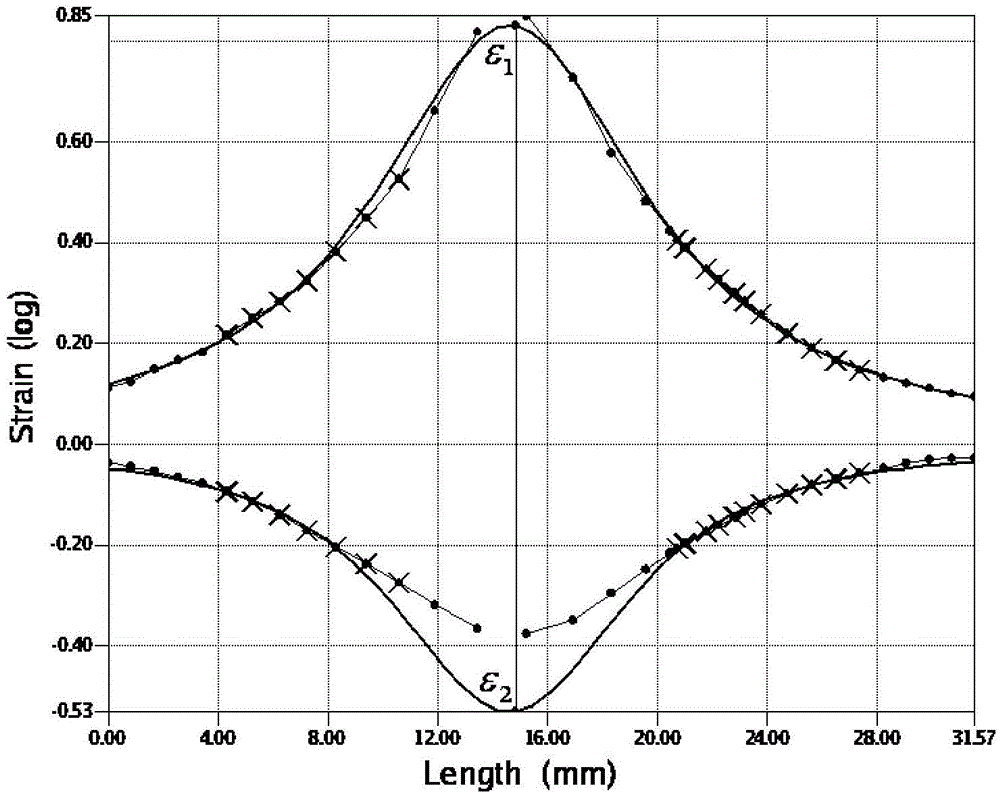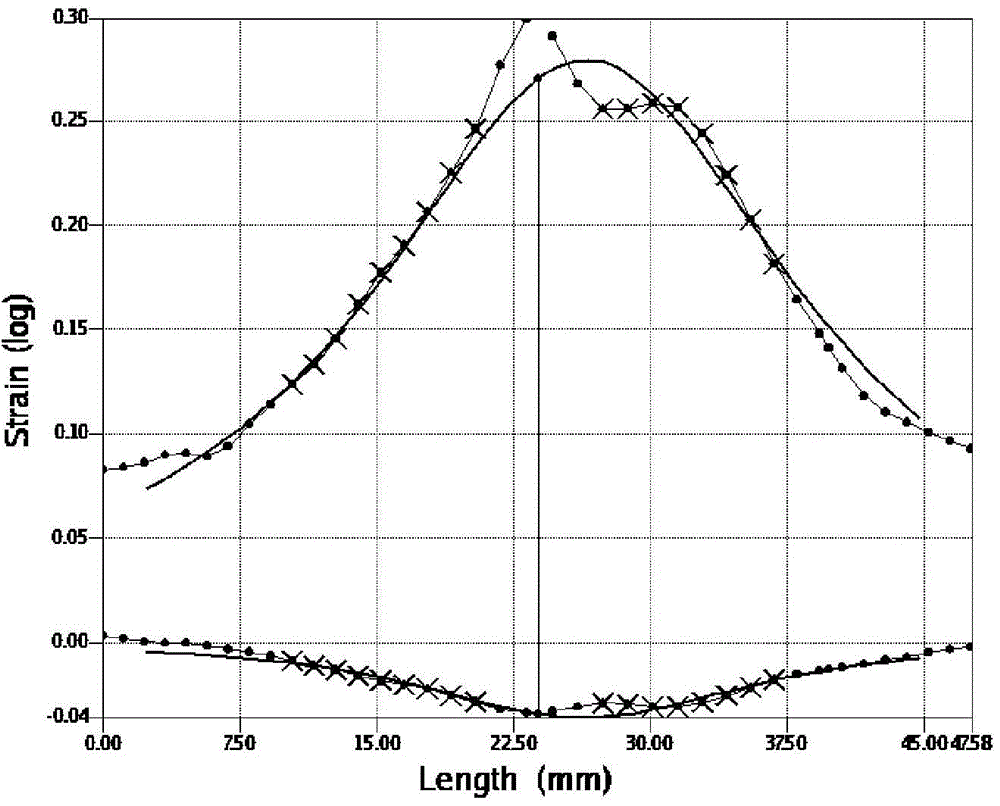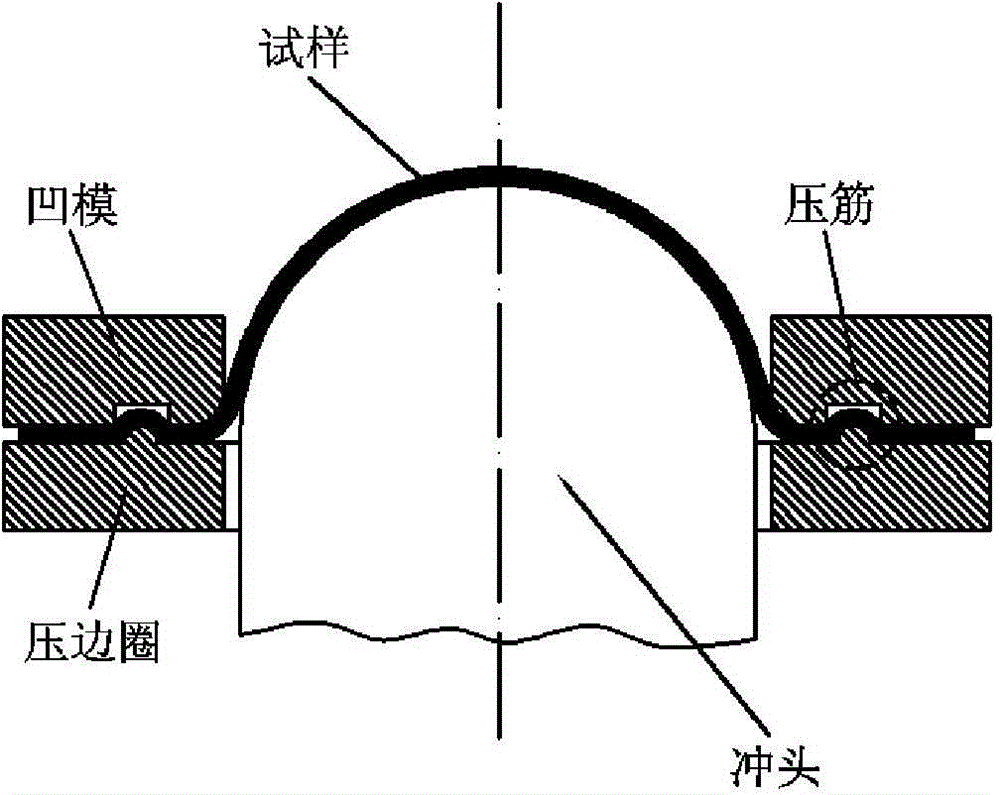FLC (forming limit curve) testing method based on variation of strain rate
A technology of strain rate and test method, applied in the direction of testing the ductility of materials, special data processing applications, instruments, etc.
- Summary
- Abstract
- Description
- Claims
- Application Information
AI Technical Summary
Problems solved by technology
Method used
Image
Examples
Embodiment 1
[0029] 1. FLC online test
[0030] 1.1 Test method
[0031] see image 3 , using the Nakajima curved surface bulging test method for the forming limit test of the material, the punch diameter is 100mm, the punch speed is 40-60mm / min, and the blank holder compresses the sample so that the material at the edge of the sample will not flow into it during the test In the die, the sample mainly deforms and flows at the contact part with the punch. By changing the geometry of the sample, different strain paths can be obtained at the part where the sample contacts the top of the punch.
[0032] 1.2 Preparation of samples
PUM
| Property | Measurement | Unit |
|---|---|---|
| length | aaaaa | aaaaa |
Abstract
Description
Claims
Application Information
 Login to View More
Login to View More - R&D
- Intellectual Property
- Life Sciences
- Materials
- Tech Scout
- Unparalleled Data Quality
- Higher Quality Content
- 60% Fewer Hallucinations
Browse by: Latest US Patents, China's latest patents, Technical Efficacy Thesaurus, Application Domain, Technology Topic, Popular Technical Reports.
© 2025 PatSnap. All rights reserved.Legal|Privacy policy|Modern Slavery Act Transparency Statement|Sitemap|About US| Contact US: help@patsnap.com



